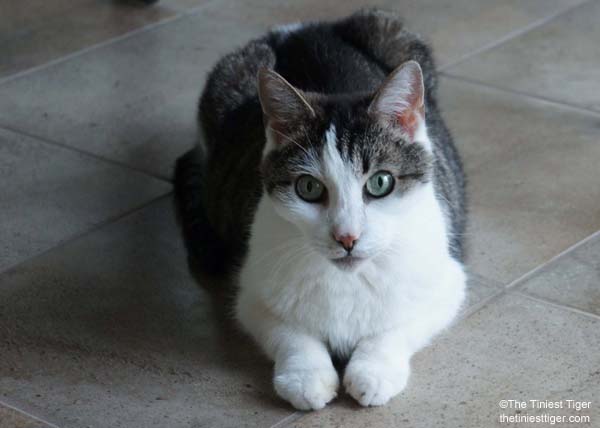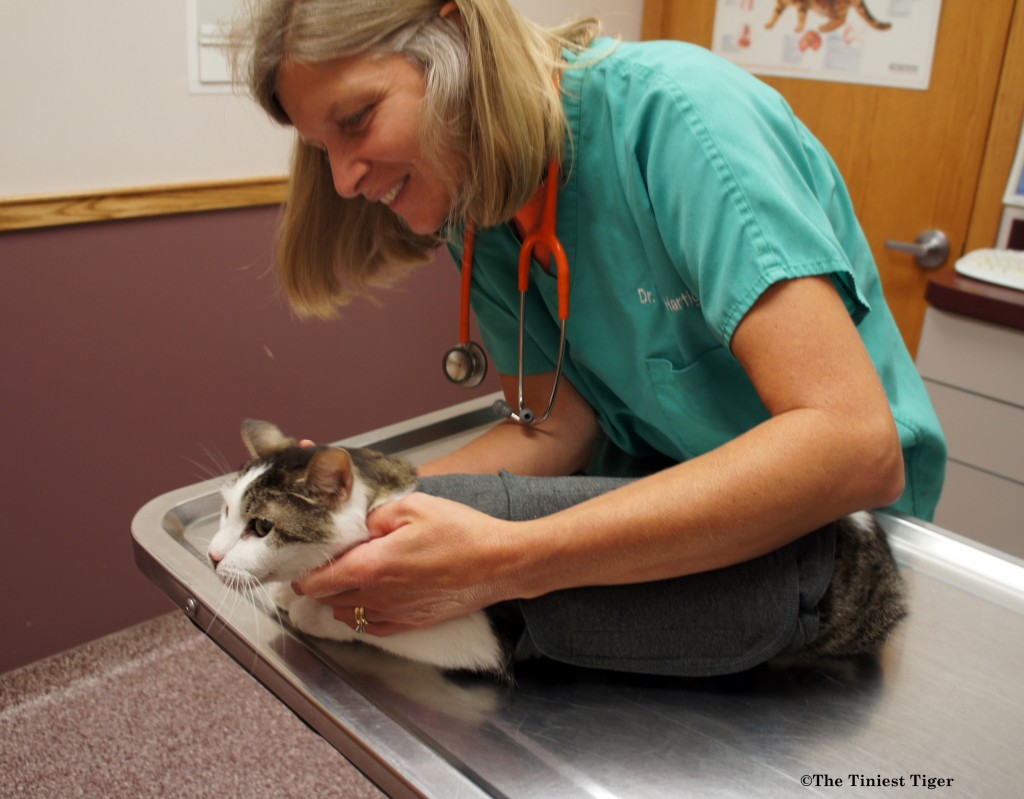November is Feline Diabetes Awareness Month. Learning more about diabetes is the best thing you can do not only for your cat, but for yourself. When you first learn that your cat has diabetes, it can be terrifying and overwhelming. One of the most important things is that you have a good relationship with your veterinarian to help you get through the initial shock and onto a regular routine to keep your cat on track.
Cat Diabetes Symptoms
Feline diabetes occurs when your cat is unable to produce enough insulin or respond effectively to insulin. Symptoms include:
- Increased thirst. You might find your cat hanging out by the water fountain or bowl.
- Urinating more than usual. We found significantly larger clumps in the litter pan.
- Increased appetite. Asking for more food than usual.
- Weight loss, even though eating more food.
- Weakness in the back of legs. Your cat might have difficulty jumping up onto the sofa or bed. You might notice something different in your cat’s stance.
How Feline Diabetes is Diagnosed
Your veterinarian will draw blood and collect a urine sample to do the following tests.
- High blood glucose (sugar) or hyperglycemia test. Depending on your cat’s symptoms, a glucose concentration of 200-300 mb/dL could indicate the presence of diabetes.
- Fructosamine test. This test helps your veterinarian to understand your cat’s blood glucose over a one to three week period. If the fructosamine measurement is above 400 ?mol/L this could indicate diabetes.
- Urinalysis test. Glucose in your cat’s urine indicates a failure of the kidneys to filter the glucose out of the blood, which suggests the cat is hyperglycemic and may have diabetes.
Why You Might Want To Plot a Blood Glucose Curve At Home
One of the best ways to help aid in regulating insulin levels is for you to learn how to use a blood glucose meter and plot a glucose curve at home. You might think this will be too difficult, but with practice and patience, you will be able to get this testing down to a routine. Paul and I were afraid too and there were tears, from both of us while we figured it out.
A blood glucose curve is a plot of your cat’s blood sugar levels during the day. The purpose of the glucose curve is to obtain blood glucose levels at the time of the morning meal and every 2 to 4 hours afterwards for at least 12 hours to show a pattern of when the level is too high, too low or just right. This is valuable information that is needed to get optimum regulation of insulin levels.
This is important because so many cats are worked up from nerves at the clinic so their blood glucose levels might be higher than normal. If you are able to monitor your cat from the comfort of their home, the reading might be more accurate helping get a more precise measure of your cat’s insulin requirements.
Your Cat’s Insulin Needs
Insulin is a hormone for regulating blood glucose (sugar), critical to the metabolic process. According to ProZinc, diabetic cats have difficulties producing and using insulin and fall into three main categories:
- Some cats with diabetes produce enough of their own insulin. An exercise plan or special diet can help them respond to their own insulin more effectively and may be the only treatment needed.
- Many diabetic cats cannot make enough insulin. In some cases, they are unable to respond to insulin efficiently and need more of it than their bodies can produce.
- Other diabetic cats don’t produce enough insulin or none at all. The pancreas’s insulin-producing cells have become damaged and no longer function properly.
*Please note there is no substitute for the advice, examination and care from a Veterinarian. All information here on The Tiniest Tiger is from our own experience and not intended to be used to diagnose or treat symptoms in your cat. Please consult a trusted Veterinarian for all your cat’s health needs.


If you were to ask me, I would never have guessed weight loss would be a symptom. Thank you.
Thanks for the post. I have had two diabetic kitties. I think I felt worse giving the shots than my cat did getting them. Very good idea to have good communication with your vet. You need them very much.
Sue B
Very insightful article Joanne! I can vouch as an emergency medical
technician and CPR/first aid instructor for both humans and pets that
diabetes in cats and dogs effects the body almost identically to how it
does in people. I am glad that you have brought up the November is
Feline Diabetes Awareness Month. I hope that all cat owners come across
this blog post to make themselves aware of not only the signs and
symptoms of diabetes in their cats, but also how to manage the disease.